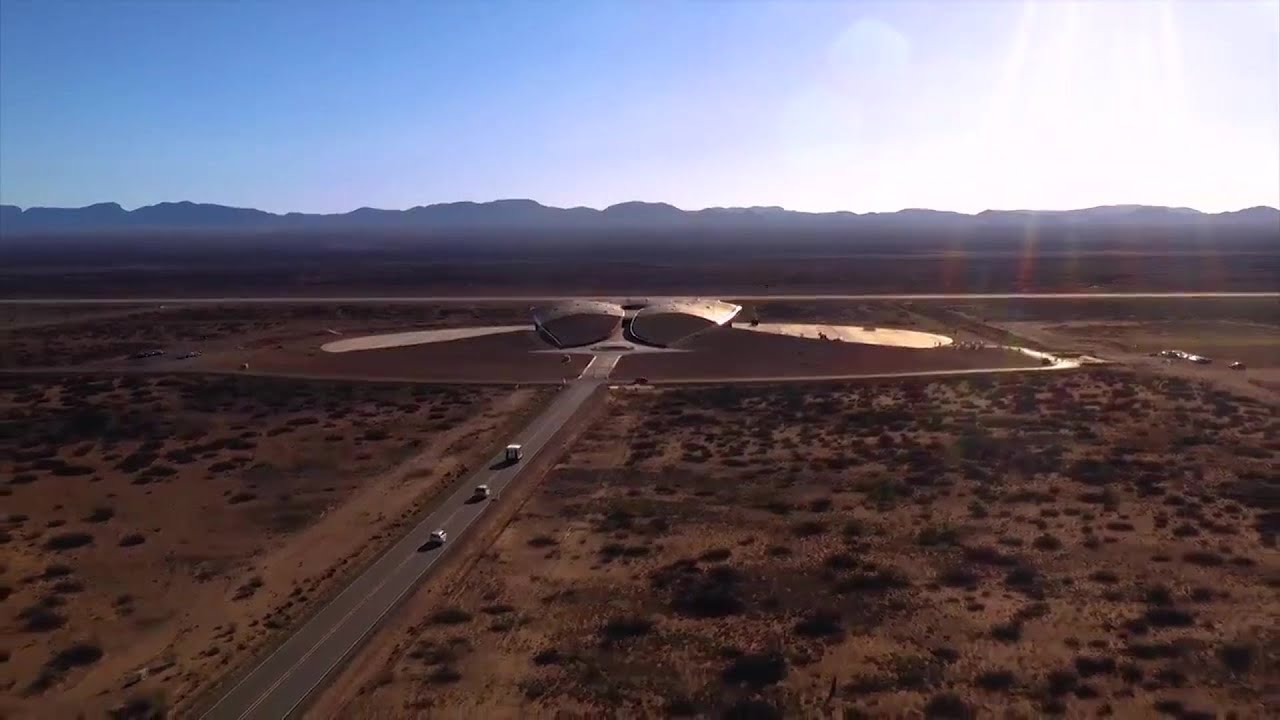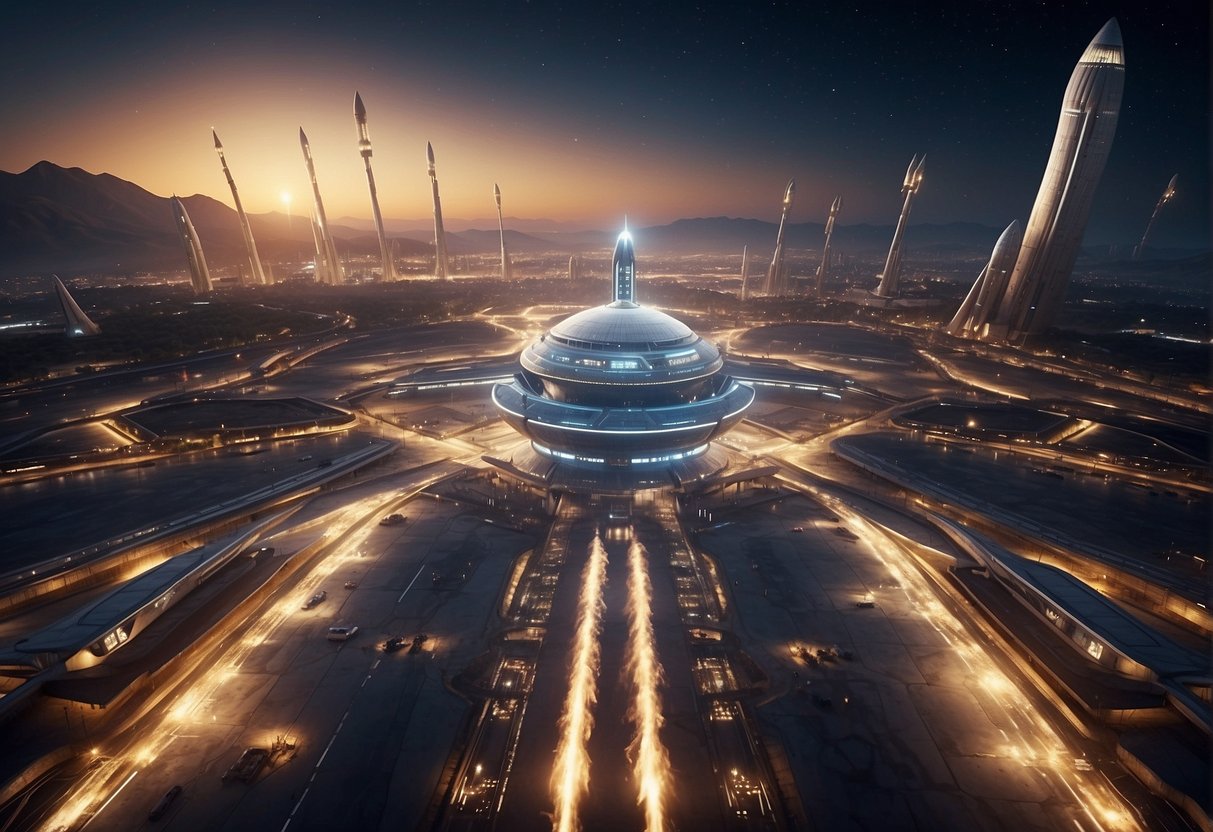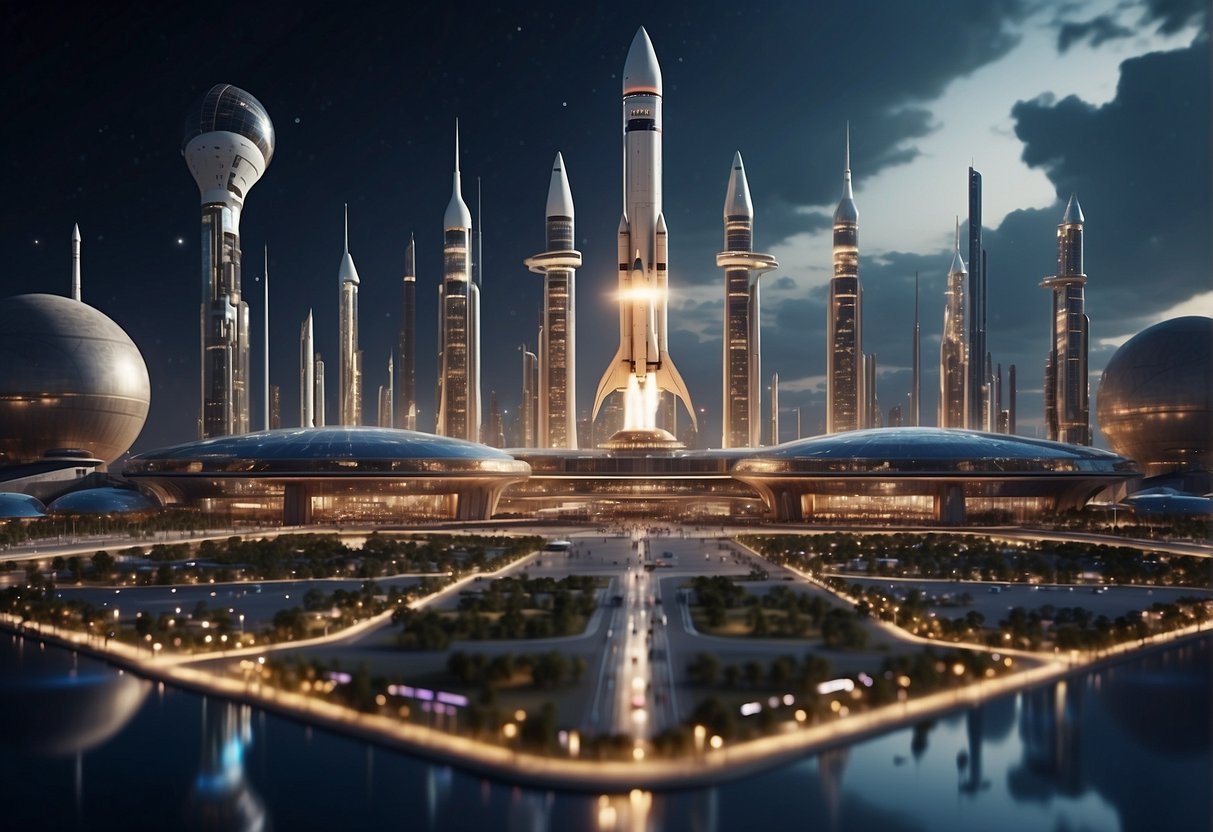
Spaceports, which serve as the physical launch sites for spacecraft, are the vital infrastructure that bridges Earth to the cosmos. They are found scattered across the globe, each playing a pivotal role in the pursuit of space exploration, science, and industry. While spaceports were once solely the domain of national space agencies, they now support the flourishing endeavors of private space companies as well. This evolution from government-operated launch pads to commercial space hubs reflects the changing dynamics within the realm of space travel.

As the number of orbital launches increases and the players in the space industry diversify, spaceport technologies and their strategic importance continue to advance. These sites are carefully selected based on various factors, including geographical location and orbital mechanics, to maximize the efficiency and safety of launches. Furthermore, the international collaboration and competition among spaceports underscore their geopolitical significance and the collective effort toward spacefaring achievements.

The landscape of space exploration has seen profound changes since the dawn of the Space Age. In the late 1950s, the Soviet Union’s launch of Sputnik 1 signaled humanity’s first foray into the cosmos, with Baikonur Cosmodrome in Kazakhstan as the stepping stone. This historic site later witnessed Yuri Gagarin becoming the first human to orbit Earth, cementing its legacy in space history.
The United States responded to the Soviet advancements by ramping up its own space efforts, culminating in the iconic Apollo 11 mission launched from Cape Canaveral in Florida. This period of competition, known as the Cold War, drove enormous technological and infrastructural developments culminating in multiple spaceports across the globe.
Fast forward to the present, and the catalog of global spaceports has expanded significantly. Private space companies like Rocket Lab have established their own launch sites, with the Mojave Air and Space Port providing a hub for innovation and commercial ventures.
Vandenberg Air Force Base serves as a versatile launch site, accommodating a variety of orbits and missions. Their locations and capabilities are tailored to both governmental and commercial needs, reflecting an era where space is increasingly accessible.
Historical Spaceports:
Modern Additions:
These sites are not merely launch points but gateways to the stars, propelling not just spacecraft but also human aspirations and scientific discovery. They stand as monuments to progress, symbols of international cooperation, and testaments to the indomitable human spirit.
The global network of launch sites serves as pivotal platforms propelling humanity into the cosmos. These facilities are not just launch points but also hubs of innovation, bearing witness to historic moments and advancing the frontiers of space exploration.
Florida’s Kennedy Space Center and the nearby Cape Canaveral Spaceport are icons of America’s space legacy. Kennedy Space Center, under NASA’s stewardship, has been the departure site for numerous historical missions, including the pioneering Apollo moon landings. On the same vein, Cape Canaveral Air Force Station has a lengthy history with spaceflight, having facilitated the launch of the Mercury and Gemini missions. Today, both sites have embraced modern spaceflight, exemplified by partnerships with commercial entities like SpaceX, which uses these facilities for its innovative launch operations.
Situated in Kazakhstan, the Baikonur Cosmodrome is steeped in spaceflight history as the launch point of Sputnik 1, the first artificial Earth satellite. As the world’s oldest and largest operational space launch facility, it has been instrumental in the Soviet and Russian space programs, with the Soyuz spacecraft continuing to embark on crewed missions from its storied launch pads.
Nestled in Kourou, French Guiana, the Guiana Space Centre is a cornerstone of European space operations. Operated by the European Space Agency (ESA), this site benefits from its proximity to the equator, allowing for efficient launches due to the Earth’s rotational speed. It’s a prime location for launching the Ariane family of rockets, a staple in transporting payloads for various international clients.
Each of these prominent launch sites demonstrates a commitment to advancing space exploration, serving as a testament to human ingenuity and the relentless pursuit of expanding our reach beyond Earth.
Innovative technologies in spaceports are revolutionizing the way we launch spacecraft and develop infrastructure to support those launches. From advancements in launch mechanics that expand our capabilities to the sophisticated development of ground facilities, these innovations herald a new era in space exploration.
Vertical Launches: Spaceports have enhanced their launch methods, with advancements in vertical launch systems being a notable leap forward. Companies like SpaceX, founded by Elon Musk, have been at the forefront of this wave, developing reusable launch vehicles that dramatically reduce the cost of reaching orbit. The Falcon Heavy, one of the most powerful rockets in operation, represents a significant milestone in vertical launch capabilities.
Horizontal Launches: Not all spacecraft take to the skies by shooting straight up. Blue Origin, established by Jeff Bezos, is exploring the future of horizontal launches—a method where the spacecraft is first carried aloft by a larger aircraft before igniting its own engines. This approach can provide more flexibility in launch conditions and reduce the physical stress on payloads.
Ground-Based Infrastructure: Spaceports across the globe are investing in ground-based infrastructure to support the increasing cadence of spaceflights. Contemporary spaceport facilities not only offer robust support for traditional vertical launches but also cater to the burgeoning horizontal launch market. This multi-faceted development is essential to accommodate a variety of launch vehicles and spacecraft.
Technological Integration: Modern spaceports integrate a range of technologies to improve operations. This includes advanced telemetry and tracking systems, safety mechanisms to handle potentially explosive rocket fuels, and environmental controls to safeguard the delicate instruments aboard spacecraft. The enhancement of these systems is crucial to ensuring that spaceports remain efficient and capable of handling the intricacies of 21st-century spaceflight.

With an expanding space economy and increasing interest from private companies, commercial spaceports have become critical infrastructure in the modern race to space.
In response to the growing demand for commercial space travel, an array of new players has entered the field. Companies like SpaceX and Blue Origin are at the forefront, backed by billionaire investors with a vision of space as not just a scientific frontier, but also a commercial one. SpaceX has significantly driven down launch costs with their reusable rocket technology, while Blue Origin’s New Shepard system aims to open space to tourism. Rocket Lab also contributes as a nimble innovator specializing in small satellite launches.
Spaceport America in New Mexico and Corn Ranch in Texas illustrate this shift away from traditional government-operated launch facilities. These sites, specially designed for use by these emerging space enterprises, facilitate a range of activities from testing to launching vehicles aimed for orbit and beyond.
As the space industry evolves, several locations are transforming into hubs for private spaceports. In the United States, states like New Mexico and Colorado have taken the lead. Spaceport America in New Mexico serves as a home base for Virgin Galactic’s space tourism ambitions. In Texas, Jeff Bezos’s Blue Origin operates from Corn Ranch, which dovetails with their aspirations for reusable rockets.
Moreover, facilities such as Cecil Field Spaceport in Florida and Houston Spaceport in Texas reflect the broader trend. They are repurposed airports turned into launch sites, signifying an increasing tendency among regions to tap into the lucrative space economy..splitContainer
These developments point to a dynamic shift in how humanity accesses and utilizes space, democratizing entry not only for countries but for entrepreneurs and private entities eager to explore and commercialize the final frontier.

The placement and development of spaceports have become critical strategic assets, influencing national security, economic growth, and environmental sustainability worldwide. They are no longer just launch sites but pivotal in a nation’s spatial ambitions and geopolitical dynamics.
Spaceports play a significant role in a nation’s defense capabilities. Sites like Kapustin Yar in Astrakhan Oblast, Russia, not only serve as launch facilities but are also intertwined with the military’s strategic interests. The presence of these facilities can signal a country’s commitment to maintaining a foothold in space, which, according to the Center for Strategic and International Studies (CSIS), is increasingly recognized as a pivotal domain in modern warfare. As nations seek to protect their assets both on the ground and in orbit, spaceports become central to the architecture of national security.
The rise of the space economy is closely tied to the existence and success of spaceports around the world. Organizations like the Federal Aviation Administration (FAA) regulate and promote safe and efficient civil space traffic, reflecting the growing economic impact spaceports have on local and global markets. Moreover, the Vostochny Cosmodrome serves as an example of significant government investment in spaceport infrastructure, propelling economic development through job creation, technological advancement, and international collaboration.
Launch sites inherently come with environmental impacts that necessitate careful consideration and management. The construction and operation of spaceports, such as fuel handling and rocket launches, can impose environmental pressures on their surroundings. Addressing these concerns, entities like the Centre for Strategic and International Studies evaluate the environmental footprint of spaceports and advocate for regulations and practices that minimize damage to ecosystems while enabling progress in space exploration.
Spaceports have become the foundational launch pads for humanity’s ventures into the cosmos. As gateways to the stars, these facilities do not only serve as departure points for spacecraft but also as the critical infrastructure that propels experiments, satellites, and explorers into orbit and beyond.
Traditionally used by government agencies, spaceports are now increasingly instrumental for commercial entities aiming to place artificial satellites into low-earth orbit. They are pivotal in advancing our understanding of space, allowing for the frequent deployment of technology necessary for communication, Earth observation, and scientific research.
They are becoming increasingly versatile, supporting a variety of missions including those aimed at Mars exploration. As preparations for manned missions to Mars advance, spaceports are evolving to accommodate the complex needs of interplanetary travel. This includes the provision of facilities for the construction, testing, and launching of specialized spacecraft capable of undertaking these long-duration missions.
Exploration and commercialization of space are symbiotic, with each new launch fostering technological innovation and expanding the horizons of what is possible. Spaceports are at the heart of this relationship, acting as enablers for aspiring spacefaring nations and private companies alike to contribute to the tapestry of space activity.
The continual development of spaceports around the world not only signifies a commitment to ongoing space exploration but inspires a new generation of scientists, engineers, and dreamers. These sites stand as monuments to human curiosity and the relentless pursuit of knowledge, bridging the gap between Earth and the endless expanse of space.

When selecting a launch facility, orbital mechanics play a crucial role. Launch sites closer to the equator, such as the Kennedy Space Center, benefit from the Earth’s higher rotational speed at that latitude, which contributes additional velocity to rockets and reduces the fuel needed to reach orbit. This equatorial advantage is particularly significant for equatorial launches, which aim to place satellites in an orbit that keeps pace with Earth’s rotation.
Launch sites also have to consider the desired orbital plane. Facilities situated at higher latitudes offer easier access to polar orbits, which are vital for Earth observation missions.
Anatomy of a Launch:
Here is a simple comparison of the efficiency gains:
| Launch Site Latitude | Efficiency Gain |
|---|---|
| Equatorial | Maximum |
| Mid-latitude | Moderate |
| Polar | Specialized for specific orbits |
To summarize, the careful selection of a launch site, considering the principles of orbital mechanics, is foundational for a successful space mission. The right location can significantly optimize fuel use and increase the payload capacity, enhancing the overall feasibility and cost-effectiveness of space exploration.
In the rapidly evolving landscape of space travel, regulation and oversight are pivotal for safety, security, and sustainability. Entities like the Federal Aviation Administration (FAA) spearhead the regulatory framework required to navigate this new frontier. They ensure that space travel complies with safety standards akin to those in conventional air traffic control.
Air Traffic Control plays a critical role in managing the complex airspace activities. Likewise, in space, coordination of launch and re-entry operations, and avoiding orbital debris, demand meticulous oversight. Operational regulations cover a gamut of considerations, from the environmental impact of rocket fuel combustion to the tracking of spacecraft in orbit.
Recent space news highlights a surge in private sector engagement, necessitating transparent regulations that encourage innovation while safeguarding public interest. A kaleidoscope of laws govern:
The regulation of spaceports aligns with aviation standards while also extending to unique space travel challenges. This includes crafting norms for ground facilities, launch vehicles, and crew qualifications. Through collaboration with industry experts, the FAA fosters a regulatory ecosystem that upholds safety without stifling the entrepreneurial spirit propelling humanity to the stars.
This section provides clear answers to common inquiries about spaceports and their role in space exploration and related industries.
Spaceports serve as crucial infrastructure for space exploration, functioning as launch and recovery sites for spacecraft. They are equipped to support various space missions, including satellite launches, scientific research, and manned spaceflights.
There are over 30 operational spaceports around the world, each varying in capabilities and specialties, supporting governmental and commercial space activities.
The majority of major spaceports can be found in key locations such as the United States, Russia, French Guiana, China, and Kazakhstan, among others. These sites are strategically placed, often in close proximity to the equator or in vast, uninhabited areas.
Spaceports are pivotal to the development of space tourism, offering the necessary infrastructure to launch commercial spaceflights. Companies like SpaceX and Virgin Galactic are actively working towards enabling space travel for non-astronauts.
Upcoming IPOs in the space sector often involve companies operating or planning to operate spaceports, capitalizing on the growing interest in space tourism and commercial satellite deployment.
Recent advancements in space infrastructure include the development of the Orbital Assembly, an endeavor aimed at constructing off-Earth structures to facilitate sustained human presence and industrial activity in space.